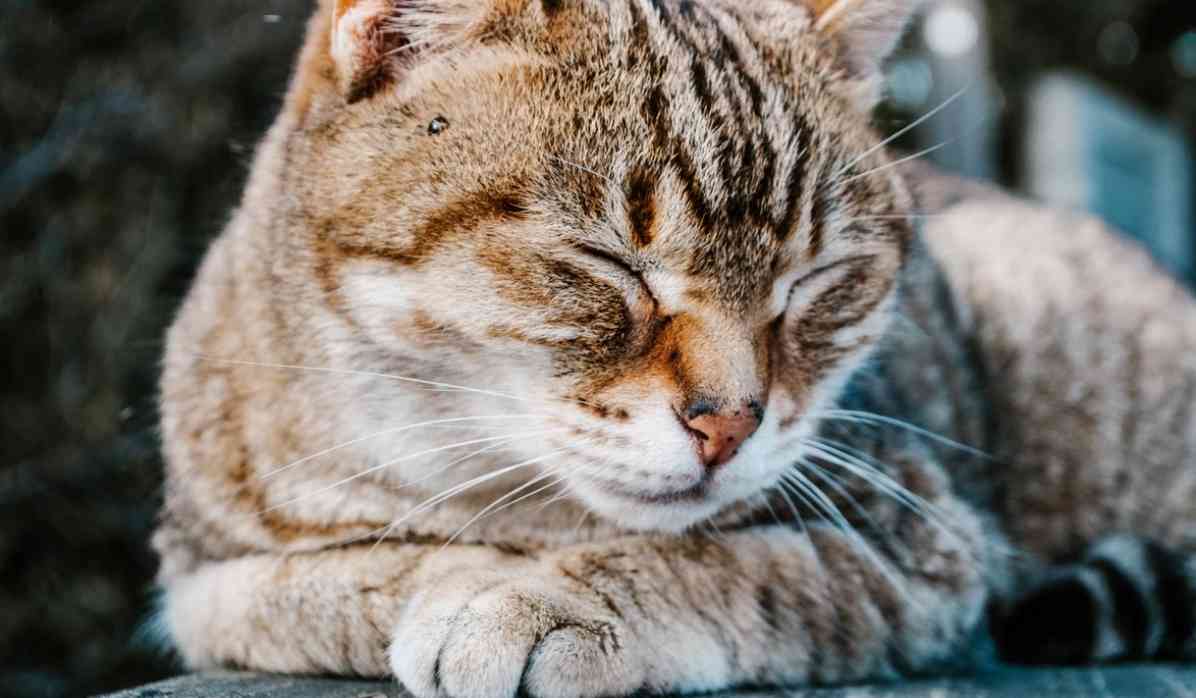Do Animals Meditate? Signs, Examples, and Symbolism

Have you ever caught your cat in a serene, motionless pose or seen your dog seemingly lost in thought and wondered: do animals meditate?
It might seem like an odd question, but when you think about it, there’s something intriguing about the possibility of our furry friends practicing mindfulness.
In this article, we’ll dive into the fascinating world of animals and meditation, exploring the similarities and differences between their mental states and our own human meditative practices.
So, grab a cup of tea, get comfy, and let’s journey into the peaceful realm of animal mindfulness together!
Recognizing Signs of Meditation in Animals
Stillness and focused attention
One of the most apparent signs of meditation in animals is their stillness and focused attention.
Just like humans, animals may sit or lie down in a calm, motionless state, seemingly lost in their thoughts.
Their focus on the present moment, without being easily distracted, can resemble the concentration we practice during meditation.
Deep and rhythmic breathing
Animals displaying meditative-like behavior may exhibit deep and rhythmic breathing patterns.
This type of breathing, similar to the one humans use during meditation, can promote relaxation and tranquility.
Observing an animal’s steady, relaxed breaths can provide a clue to their mental state and whether they might be experiencing something akin to meditation.
Relaxed body posture
A relaxed body posture is another sign that an animal may be engaging in meditation-like behavior.
Just as humans adopt specific postures for meditation, animals may assume positions that encourage relaxation and inner peace.
For example, a dog might lie down with its legs tucked in, or a cat may curl up in a perfect circle, both indicating a sense of calm and ease.
Reduced responsiveness to external stimuli
When animals enter a meditative state, they may show reduced responsiveness to their surroundings.
This means that they are less likely to be distracted by noises, movement, or other external factors, similar to humans when they’re absorbed in meditation.
This focused attention can be a strong indication that an animal is experiencing a state of mindfulness.
Closing or half-closing their eyes
Just as humans often close their eyes during meditation to minimize distractions and focus inwardly, animals may also close or half-close their eyes when in a meditative state.
This behavior can be seen in various species, from cats and dogs to even birds, as a way of retreating from the external world and promoting a sense of inner calm.
Repetitive behaviors
Animals may engage in repetitive behaviors that can be considered meditative.
For example, a cat’s rhythmic purring or a bird’s gentle preening can be soothing and calming for the animal, creating a sense of focused attention and relaxation.
RELATED: Did Albert Einstein Meditate? Spirituality & Routine In His Work
These repetitive actions might serve as a form of self-soothing, akin to how humans use mantras or repetitive movements in meditation.
Lowered stress levels
Animals displaying meditative-like behaviors may exhibit lowered stress levels, as evidenced by physiological changes.
Just as meditation in humans reduces stress hormones and activates the parasympathetic nervous system, animals in a state of mindfulness may show a decrease in heart rate, lower blood pressure, and reduced cortisol levels.
These physiological shifts can indicate that the animal is tapping into a state of relaxation and inner peace.
Known Examples of Animals Exhibiting Meditative-like Behaviors
Cats
Cats are well-known for their ability to find a cozy spot and curl up, seemingly lost in their thoughts.
They often close their eyes or stare off into the distance, appearing to be in a deep state of relaxation.
This behavior, combined with their slow, rhythmic purring, suggests that cats may experience a form of meditation as they bask in their serene surroundings.
Dogs
Dogs, like cats, have moments of calm and stillness.
You might find your furry companion lying down with a peaceful expression, seemingly lost in thought.
Their deep, steady breathing and relaxed body posture during these moments can resemble the meditative state humans experience, suggesting that dogs may also tap into a form of mindfulness.
Primates
Monkeys and apes have been observed engaging in self-soothing behaviors that could be considered meditative.
For example, grooming is an essential social activity in primate groups, and the focused, repetitive action of picking through fur and cleaning their fellow primates can provide a sense of relaxation and inner calm for both the groomer and the one being groomed.
Horses
Horses are known for their sensitivity and emotional intelligence.
They can often be seen standing or lying down in a relaxed posture, with a soft gaze and slow, steady breaths.
This state of rest and repose, often referred to as “loafing,” could be seen as a form of meditation for these majestic animals.
Birds
Birds, especially those in the corvid family (such as crows and ravens), have been observed engaging in behaviors that can be interpreted as meditative.
They may sit on a branch, close their eyes, and gently preen themselves or simply bask in the sun.
This momentary stillness and attention to their surroundings may provide a sense of relaxation and inner peace.
Fish
Although it may be harder to recognize, some fish species exhibit meditative-like behaviors.
For instance, many aquarium owners have observed their fish appearing to “zone out” and float in one spot, seemingly lost in thought.
While it’s difficult to discern the mental state of fish, this behavior suggests that they might also experience moments of mindfulness.
Marine mammals
Dolphins and whales are known for their intelligence and complex social structures.
They have been observed engaging in synchronized movements, such as swimming in formation or leaping in unison.
These coordinated activities require focus and attention, and it’s possible that the sense of connection and unity experienced during these moments could provide a form of meditative-like state for these marine mammals.
The Symbolism of Animal Meditation in Ancient Cultures
Animals in spiritual traditions
Throughout history, animals have played a significant role in various spiritual and religious practices.
Many ancient cultures viewed animals as sacred beings, often attributing spiritual qualities to them, such as wisdom, strength, and inner peace.
Some even believed that animals could serve as guides or teachers in the pursuit of spiritual growth and meditation.
Buddhism and the ‘mindful’ animals
In Buddhist tradition, certain animals are considered to possess qualities that are conducive to meditation and mindfulness.
For example, the deer is often depicted as a symbol of gentleness and tranquility, embodying the virtues of meditation.
RELATED: How to Integrate The Fool Archetype (+Examples)
The Buddha himself was said to have given his first sermon in a deer park, further highlighting the connection between animals and mindfulness in Buddhist teachings.
Hinduism and animal symbolism
In Hinduism, various animals are associated with different deities and spiritual attributes.
For instance, the cow is considered a symbol of abundance and motherhood, while the elephant represents wisdom and strength.
These animals, often depicted alongside gods and goddesses, serve as reminders of the spiritual qualities that practitioners should strive to cultivate through meditation and other spiritual practices.
Native American spirituality
Native American cultures have long revered animals for their wisdom and spiritual significance.
Many tribes have specific animals, known as “totems” or “spirit animals,” that serve as guides and protectors.
These animals are thought to possess unique insights and abilities that can help individuals on their spiritual journey, including the practice of meditation and mindfulness.
Ancient Egyptian animal symbolism
In ancient Egypt, animals played a central role in religious beliefs and practices.
Many animals were considered sacred and closely associated with various gods and goddesses.
Some animals, like the ibis and the cat, were believed to possess qualities of stillness and contemplation, serving as symbols of meditation and spiritual introspection.
Celtic animal lore
The Celts, known for their deep connection to nature, also recognized the spiritual significance of animals.
They believed that animals, like humans, possessed unique qualities and attributes that could be harnessed for spiritual growth.
In this tradition, the salmon was considered a symbol of wisdom and knowledge, while the swan represented grace and inner peace – qualities often associated with meditation.
Chinese animal symbolism
In Chinese culture, animals have long been associated with various spiritual qualities and virtues.
The dragon, for example, is a symbol of power and wisdom, while the crane represents longevity and grace.
These symbolic associations with animals serve as reminders of the spiritual ideals that individuals should strive to cultivate through meditation and other practices.
What Can We Learn from Animals about Mindfulness and Meditation?

Living in the present moment
Animals have a unique ability to live in the present moment, fully experiencing their surroundings without dwelling on the past or worrying about the future.
This natural mindfulness can serve as a powerful reminder for us to focus on the present and find joy in the simple pleasures of life.
Stillness and patience
Animals often exhibit remarkable stillness and patience, whether they’re waiting for prey or simply enjoying a moment of rest.
RELATED: Most Empathetic MBTI Types: 16 Personalities Ranked
We can learn from their example by embracing stillness in our daily lives, taking time to slow down, and cultivating patience in our meditation practice.
Deep connection with nature
Animals maintain a deep connection with their environment, adapting and responding to the natural world in harmony.
By observing and learning from animals, we can deepen our connection with nature, which can enhance our mindfulness practice and overall well-being.
Listening and awareness
Animals rely on their senses to navigate the world, always listening and attuned to their surroundings.
We can apply this heightened sense of awareness to our mindfulness practice by paying closer attention to the sounds, sights, and sensations around us, fostering a deeper connection with our environment.
Non-judgment and acceptance
Animals accept their circumstances without judgment, adapting to change and adversity with resilience.
We can learn from their example by practicing non-judgment and acceptance in our meditation, embracing our thoughts and emotions without criticism, and cultivating a sense of inner peace.
Simplicity and contentment
Animals lead relatively simple lives, finding contentment in their basic needs and daily routines.
By observing their simplicity, we can learn to appreciate the beauty of a simple life and cultivate contentment in our own lives, which can greatly benefit our mindfulness practice.
Incorporating animal-inspired mindfulness practices into our daily lives
There are many ways we can integrate the lessons we learn from animals into our mindfulness practice.
For example, we might take a walk in nature and practice mindful observation of the animals we encounter or adopt an animal-inspired yoga pose to connect with the qualities of a specific animal.
Additionally, we can practice patience and stillness by emulating the calm demeanor of animals during meditation.
Final Thoughts
In conclusion, the fascinating world of animals can teach us valuable lessons about mindfulness and meditation.
By observing their stillness, patience, and connection with nature, we can deepen our own practices and find greater inner peace.
Let’s embrace the wisdom of our fellow creatures and apply their insights to our daily lives, fostering a stronger connection with the world around us and nurturing our own spiritual growth.
What’s Next?
- Signs Of a Depressed ESFJ: Triggers and How to Help
- Why Are ISTPs So Chill & Cool? Exploring Their Quiet Nature
- Taurus Sun Sagittarius Moon: Optimistic Attitude
- North Node Conjunct Chiron Synastry: Love & Friendships
Featuring 10 powerful exercises, offering a glimpse into the transformative practice of shadow work.
